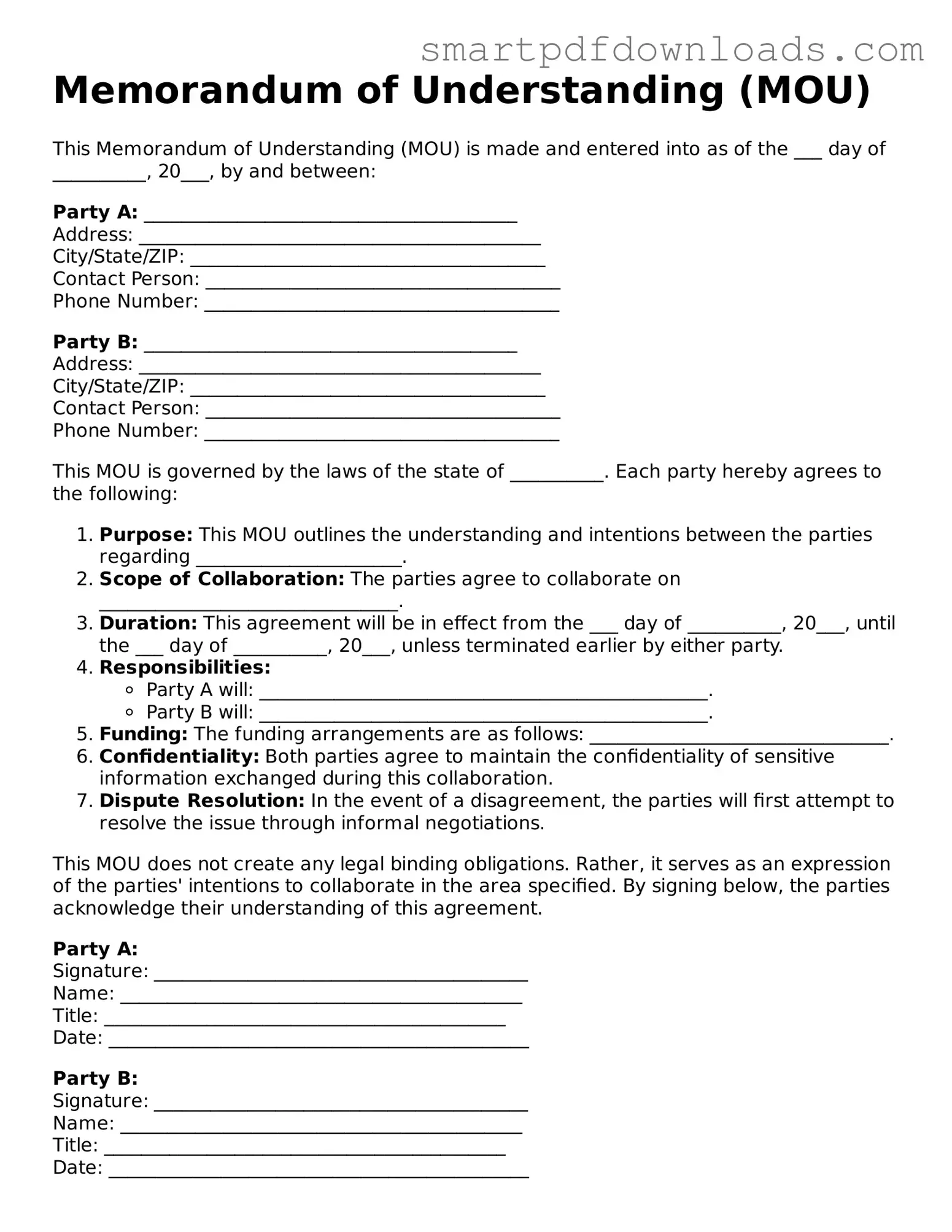Memorandum of Understanding (MOU)
This Memorandum of Understanding (MOU) is made and entered into as of the ___ day of __________, 20___, by and between:
Party A: ________________________________________
Address: ___________________________________________
City/State/ZIP: ______________________________________
Contact Person: ______________________________________
Phone Number: ______________________________________
Party B: ________________________________________
Address: ___________________________________________
City/State/ZIP: ______________________________________
Contact Person: ______________________________________
Phone Number: ______________________________________
This MOU is governed by the laws of the state of __________. Each party hereby agrees to the following:
- Purpose: This MOU outlines the understanding and intentions between the parties regarding ______________________.
- Scope of Collaboration: The parties agree to collaborate on ________________________________.
- Duration: This agreement will be in effect from the ___ day of __________, 20___, until the ___ day of __________, 20___, unless terminated earlier by either party.
- Responsibilities:
- Party A will: ________________________________________________.
- Party B will: ________________________________________________.
- Funding: The funding arrangements are as follows: ________________________________.
- Confidentiality: Both parties agree to maintain the confidentiality of sensitive information exchanged during this collaboration.
- Dispute Resolution: In the event of a disagreement, the parties will first attempt to resolve the issue through informal negotiations.
This MOU does not create any legal binding obligations. Rather, it serves as an expression of the parties' intentions to collaborate in the area specified. By signing below, the parties acknowledge their understanding of this agreement.
Party A:
Signature: ________________________________________
Name: ___________________________________________
Title: ___________________________________________
Date: _____________________________________________
Party B:
Signature: ________________________________________
Name: ___________________________________________
Title: ___________________________________________
Date: _____________________________________________
Witness: ___________________________________________
Date: _____________________________________________
